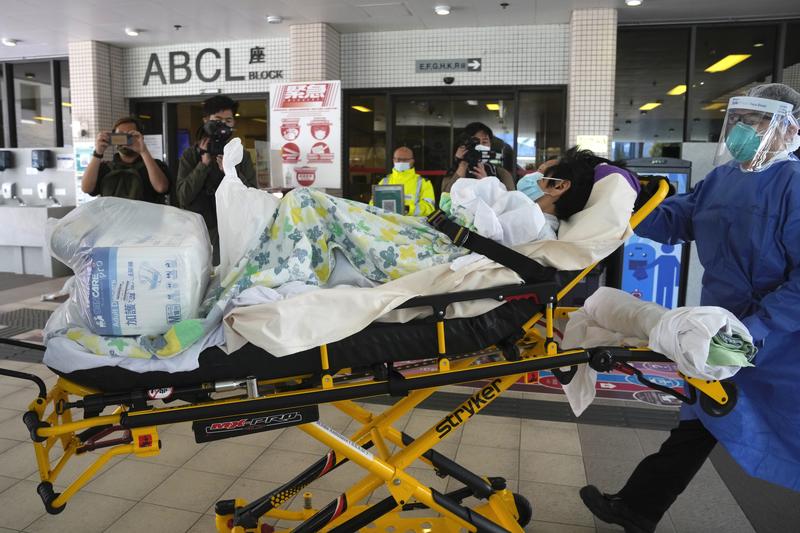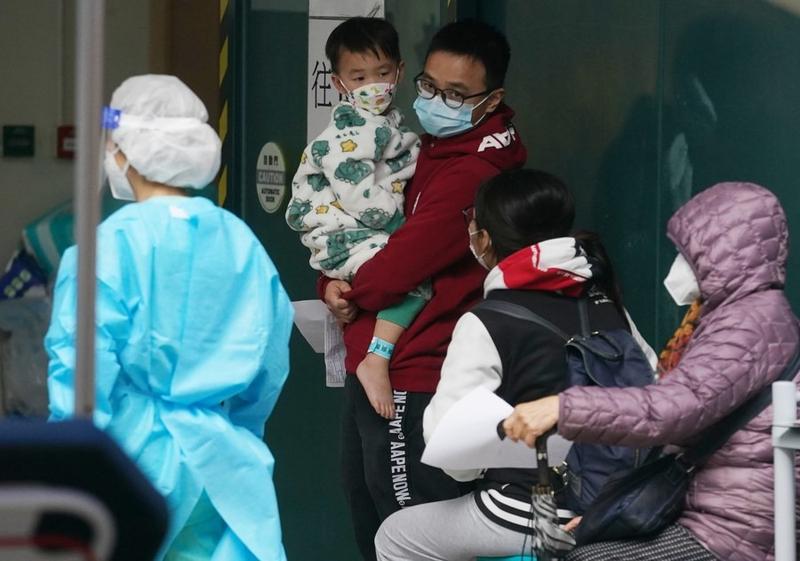 In this March 9, 2022 photo, a medical staff member transfers a non-COVID-19 patient from Queen Elizabeth Hospital to other hospitals as Queen Elizabeth Hospital will be dedicated to treat serious COVID-19 patients, in Hong Kong. (KIN CHEUNG / AP)
In this March 9, 2022 photo, a medical staff member transfers a non-COVID-19 patient from Queen Elizabeth Hospital to other hospitals as Queen Elizabeth Hospital will be dedicated to treat serious COVID-19 patients, in Hong Kong. (KIN CHEUNG / AP)
The death toll in Hong Kong’s worst wave of COVID-19 infections would have been much lower if vaccination rates had been increased last year when the pandemic situation was more stable, Hong Kong’s hospital chief said.
If we had pushed up the number of vaccinations at the stable time last year, especially by strengthening the protection of the elderly in nursing homes, the number of deaths in the fifth wave could have been largely reduced.
Henry Fan Hung-ling, Hospital Authority Chairman
During an interview with China News Service, Hospital Authority Chairman Henry Fan Hung-ling said that the biggest lesson in the fight against the pandemic is that Hong Kong should have maximized the number of people who received the vaccine last year.
The number of confirmed cases rose from a few hundred a day to a peak of more than 50,000 a day, which was alarming, Fan said. The fifth wave of the pandemic not only spread widely in the community, but also reached more than 30,000 elderly residents in residential care homes, resulting in a cumulative total of more than 1 million infections and about 6,000 deaths.
“If we had pushed up the number of vaccinations at the stable time last year, especially by strengthening the protection of the elderly in nursing homes, the number of deaths in the fifth wave could have been largely reduced,” he said, calling for higher vaccination rates as a matter of urgency.
Focusing on the strategy of “reducing deaths, serious illnesses and infections”, the HA has adopted a series of measures to tackle the pandemic, including designating specific hospitals to pool patients, specialists, resources and treatment; enhancing drug treatment by introducing two oral antivirals to reduce the deterioration of patients’ conditions and fatalities; and launching telephone hotlines, remote consultations and online support, Fan said.
ALSO READ: HK to boost vaccination of elderly, children; rate nears 90%
 People wait outside the emergency room in a hospital in Hong Kong, south China, Feb 18, 2022. (WANG SHEN / XINHUA)
People wait outside the emergency room in a hospital in Hong Kong, south China, Feb 18, 2022. (WANG SHEN / XINHUA)
The hospital has rationalized its patient admission process and enhanced its capacity to receive patients and treat critically ill patients, with a tiered triage approach being implemented to prioritize high-risk patients such as the elderly and pregnant women
The hospital has rationalized its patient admission process and enhanced its capacity to receive patients and treat critically ill patients, with a tiered triage approach being implemented to prioritize high-risk patients such as the elderly and pregnant women. This will reduce the risk of serious illness and death and help ease the pressure on medical resources, while other patients could be served by designated clinics or outreach services, Fan said.
“The backlog of patients waiting for admission to the Accident and Emergency Department has been significantly reduced, and patients now can receive appropriate treatment more quickly,” Fan said.
He acknowledged that the government and the HA had done a lot of preparatory work to deal with the pandemic before the outbreak of the fifth wave. However, coping with the current situation is beyond Hong Kong’s capacity, and the city needs the support of the central government, he said.
With the mainland medical teams coming to Hong Kong to help, more patients are being admitted, and additional isolation facilities are expected to be opened in the future, allowing for more patients to be treated, Fan said.
READ MORE: Two new vaccination centers to offer Sinovac jabs
“We are confident that with the strong support of the central government, the efforts of the SAR government and the concerted efforts of all Hong Kong people, we will soon see the light of day and tide over the hardship,” Fan added.


